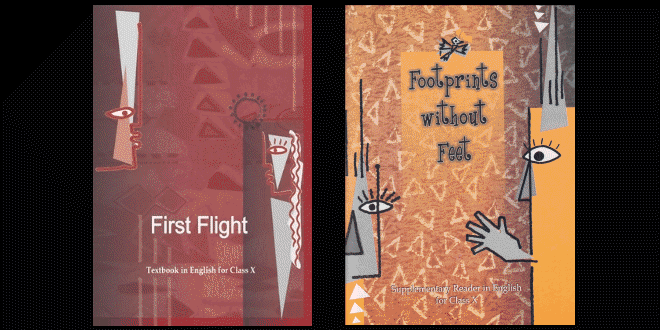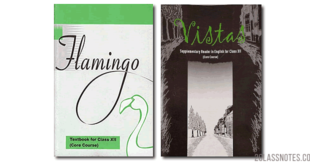How to Tell Wild Animals Poem: 10th Class NCERT CBSE English ‘First Flight’ Chapter 15
Question: Does ‘Dyin’ really rhyme with ‘lion’ ? Can you say it in such a way that it does?
Answer: No, ‘Dyin’ does not rhyme with ‘lion’. If we change the pronunciation of lion by speaking it as ‘lying’ then it may rhyme with the word ‘dyin’.
How to Tell Wild Animals – Question: How does the poet suggest that you identify the lion and the tiger? When can you do so according to him?
Answer: A lion is a large and tawny beast. A Bengal Tiger has black stripes on its yellow coat. A lion roars when it falls upon its prey, while a tiger attacks silently. We can identify the two while roaming in the jungle.
Question: Do you think the words ‘lept’ and ‘lep’ in the third stanza are spelt correctly? Why does the poet spell them like this?
Answer: The words ‘lept’ and ‘lep’ are not spelt correctly. The poet has spelt them like this in order to maintain the rhythm of the poem. The correct spelling of the words, ‘lept’ is leapt and ‘lep’ is leap. The poet has intentionally spelt them incorrectly to create a sense of humour.
Question: Do you know what a ‘bearhug’ is? It’s a friendly and strong hug-such as bears are thought to give, as they attack you! Again, hyenas are thought to laugh and crocodiles to weep (‘crocodile tears’) as they swallow their victims. Are there similar expressions and popular ideas about wild animals in your own language (s)?
Answer: A bearhug is when the bear hugs his prey tightly with both hands and presses him to death. There are indeed similar expressions and popular ideas about wild animals in every language. For example, in Hindi, we say ‘Magarmach ke aansu aaana‘ (Crocodile tears) ‘Haathi ke daant dikhane ke aur, khane ke aur‘, ‘Ab pachtaye hot kya jab chidiya chug gai khet‘, ‘Girgit ke tarah rang badalna‘.
How to Tell Wild Animals – Question: Look at the line ‘A novice might nonplus.’ How would you write this ‘correctly’? Why is the poet’s ‘incorrect’ line better in the poem?
Answer: The line “A novice might nonplus” can be written correctly as “A novice might be nonplussed”. However, the poet’s incorrect line is better in the poem as it maintains the rhyme scheme of the poem. By writing it incorrectly, ‘nonplus’ rhymes with ‘thus’.
How to Tell Wild Animals – Question: Can you find other examples of poets taking liberties with language, either in English or in your own language? Can you find examples of humorous poems in your own language (s)?
Answer: One can find plenty of examples in poetry where poets take liberties with language. This is called ‘poetic licence’. Poets take such liberties in order to create proper rhyming and rhythm. For example, in the following lines the word ‘prest’ is used instead of ‘pressed’ so that it may rhyme with ‘breast’.
A tree whose hungry mouth is prest Against the earth’s sweat flowing breast
Question: Much of the humour in the poem arises from the way language is used. Although the ideas are funny as well. If there are particular lines in the poem that you especially like, share these lines with the class, speaking briefly about what it is about the ideas or the language that you like or find funny.
Answer: The way the poet has used language and ideas in the poem is indeed humourous. The lines from the poem that appears to be funny are “A noble wild beast greets you”. The idea that a wild beast is going to welcome you is quite funny. The language in the line, “He’ll only lep and lep again” is also very humorous. The concept of ‘lep’ from the word ‘leopard’ generates humour.
Summary:
The poet is describing the various wild animals. These animals are very dangerous and she has introduced them one by one in a very funny way. First of all she tells us about an Asian lion. She says that if you are visiting the jungles of the east and there you see an animal which has tawny skin and he roars so loudly that you will die out of fear. This means that you have seen an Asian lion. Next in the line is the Bengal tiger that she has explained to be a royal animal that at once attacks and kills a man. She says by adding humour that if this beautiful black striped animal kills you and eats you, then you have surely met a Bengal tiger. After this, she says that if the reader met an animal that has black spotted skin and it at once jumps on him, then it means that the reader has met a leopard. Moreover, she says that if one will cry out in pain, it maybe of no use as the leopard will not stop attacking him. Then she moves on to the bear that she says will hug very tightly. This is the way to recognize a bear as it kills a person by hugging him very tightly. So, she says that the bear will continue to hug us tightly and that is the only way to recognize him. After this, she asks a question to the readers that do they know how to recognize beasts that hunt their prey. Here she explains about hyenas which she thinks have a smiling face and the crocodiles that have tears in their eyes. This can be seen when they are killing their prey. The last one in the list is the Chameleon. She says that it is a lizard – like creature which doesn’t have ears and wings just like a lizard. Only this can help you differentiate between a lizard and chameleon. She further says that the chameleon has a quality of changing its color according to the colour of the surface. So, to explain this she says that if the reader looks at the tree and if he can only see the tree, this means that there is a chameleon sitting on it which has already turned its color to brown just like the branch of the tree.
 Class Notes NCERT Solutions for CBSE Students
Class Notes NCERT Solutions for CBSE Students






